Today I removed the soil from my Taxus to find this–
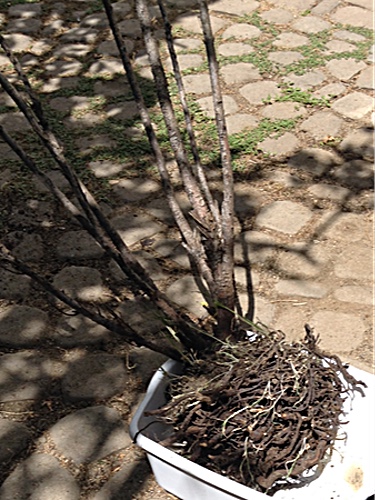
Over 20 years in the ground, with plenty of space to spread its roots.
So, why didn’t it?
Maybe it will become part of an art piece.

Today I removed the soil from my Taxus to find this–

Over 20 years in the ground, with plenty of space to spread its roots.
So, why didn’t it?
Maybe it will become part of an art piece.
Being a vegan is difficult. Reading labels has become a common occurrence whenever I go shopping. A company label can state their product is not tested on animals, but are any of the ingredients used in their product tested on animals? What about their parent company? Do they perform animal testing on other lines? Or do they claim to be cruelty-free, but perform animal tests on products to be marketed in China?
There are animal ingredients tucked into many products. I was looking for a vegan margarine for baking and found that a company lists fish oil as one of its ingredients. It is astounding how often animal ingredients are tucked into products.
Is organic produce sold at the local Farmers’ Market vegan? Maybe not. I asked a couple of farmers and they told me that they use fish emulsion fertilizer.
What is a vegan to do? You just do the best that you can. I have also come to count on the leaping bunny and the certified vegan logos. And websites like Leaping Bunny.
I found this great illustration of cruelty-free logos at The Little Foxes site.
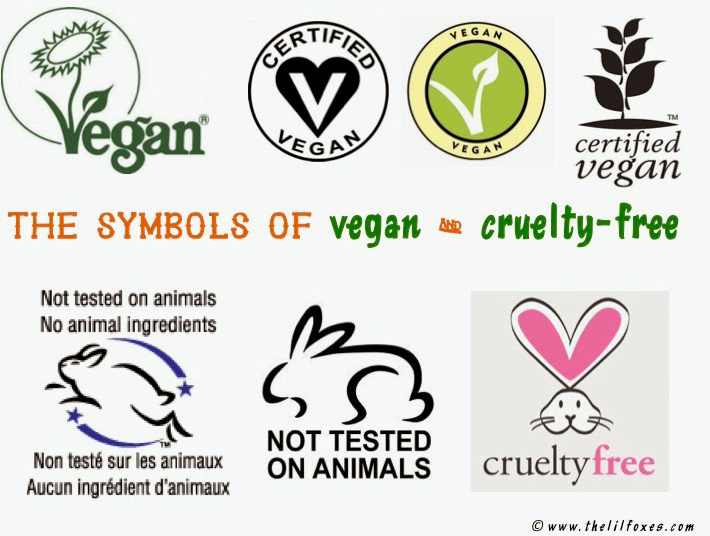
What was the purpose of this post? I was in the local Target looking for a bar of dark chocolate. I happened on this dark chocolate and mint bar.
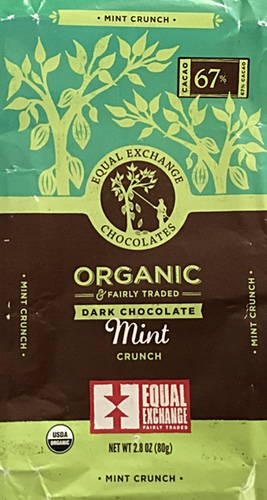
I love mint, but often anything with mint has egg whites. I didn’t see egg whites on the ingredients list, so I bought it.
When I visited the Equal Exchange Co-Op website, I found that the chocolate bar is vegan! Simple pleasure and also is fair trade.
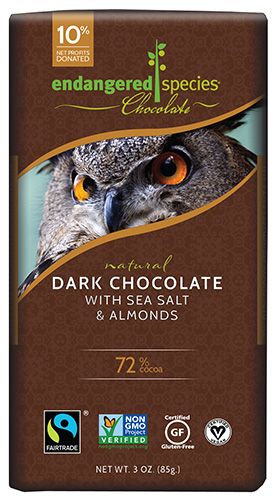
The Endangered Species, Dark Chocolate with Sea Salt & Almonds bar is also vegan.
One additional fact, combined the two bars were only $5.49. It is not unusual for a vegan chocolate bar to be at least $4-$5 each, sometimes loads more.
Our neighbor gave me a pair of columns that she had been using as part of a table. Each column is 29″ x 8.5″ x 9″ and solid concrete.
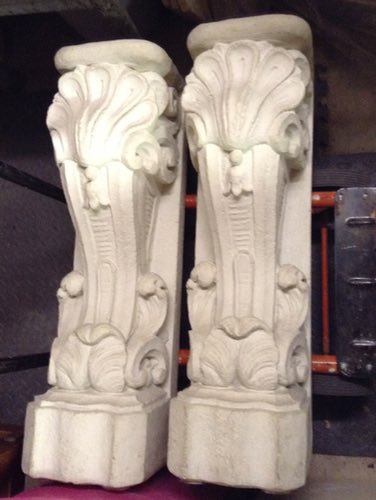
Columns on Hand Truck
Before placing them in the garden I made a couple of decisions. The first…the bottom should be the top.
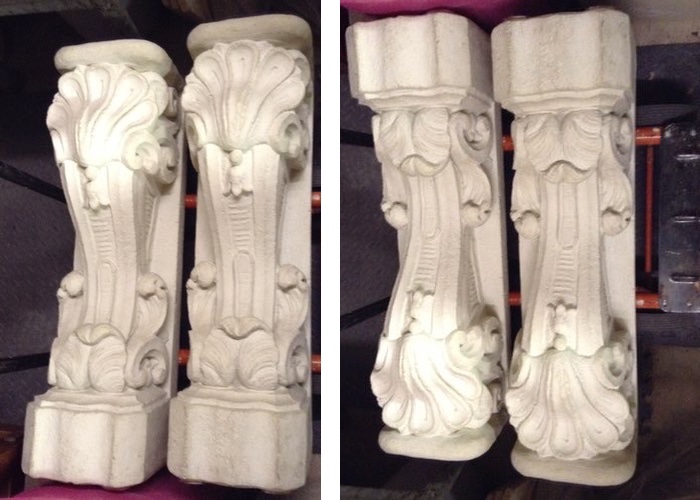
Left Side Was How The Columns Had Been Used
The Right Side is the Proper Orientation
The thin section at the bottom will not be visible. So, the only thing that bothers me is the tulip-like doodad. Just too fussy.

When I began converting the courtyard form exotic plants to drought tolerant plants, one of the first decisions was to remove the wallpieces and to paint the walls grey. It is difficult to tell from the photos taken in my studio, but the columns were too stark, too bright even in the shade.
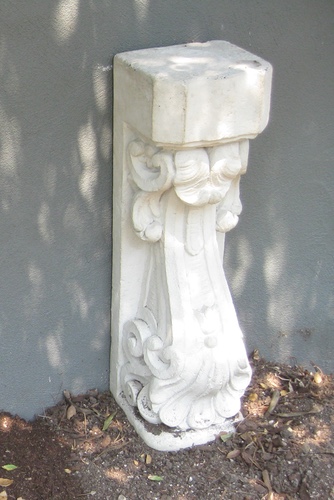
The Whiteness of the Columns is Emphasized When Placed Next to the Grey Wall
Originally I wanted to break off some hunks before aging them, but thought I would wait to see how they looked with a found wood mantel. I snagged some ash from a friend’s actual fireplace to use, if I decide to fix the columns up a bit more.

For 4 days, I had 3 pieces of wood stacked on top of the columns to help me decide if three boards had enough visual weight to work with the top of the columns.
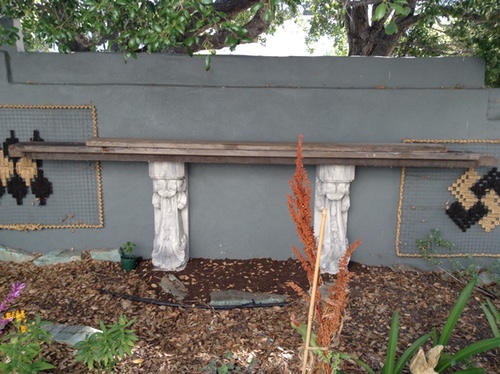
The boards are not quite as wide as the columns. And they could not sit against the wall because of the wallpiece/trellises. Each layer will have two pieces of wood to make the proper width, with a 2″ overhang in the front.
Planning to strap the wood together with metal…aluminum or copper shim. I can patina copper, but the current appearance of the materials is a bit too clean for my typical gritty surface work. The width of the metal will probably be two thirds of the section at the now top of the columns.
When I was making my morning cocoa, thought I would take one last look before cutting the wood.
This is what I found–

The wood is nicely stacked in the opposite order it had been stacked on the columns. Lucky that the stack did not break plants or the stone defining the space for the hearth.
I phoned my husband to inquire if he had moved the wood. He had not. He seems to believe that an animal could have been responsible for the restacking. His best guess–opossum. We did catch a couple opossums over the years in our humane trap when we were attempting to catch squirrels.
This was the most recent captured opossum.

And after it was released–
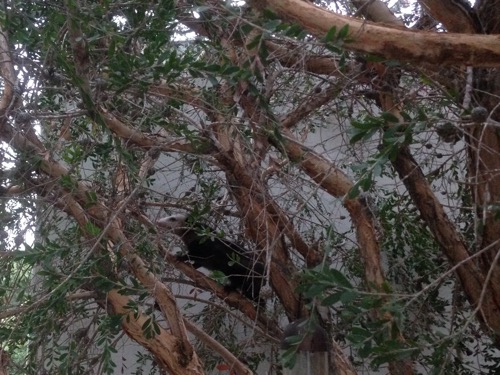
Opossum After Release Stayed in the Wisteria for Several Hours
I restacked the wood on the columns and attempted to reproduce what I found this morning. Every time resulted in a messy stack.
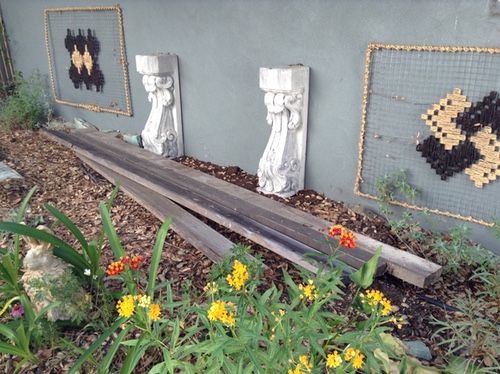
So what did happen? Did an animal (opossum) drop down from the oak tree and cause the restacking?
Curious…

The reddish brown stalk is from a volunteer that I think is a variety of mullein. It is nearly ready to harvest.
I have been fond of mullein since I used it in my Greta piece, part of my MFA exhibition.
An additional note…the garden was sloping when I began planning for the faux fireplace. I leveled it by adding soil that I removed from the now rock/succulent garden. I also added gravel under each of the columns. I had to build up the right side with nearly 4″ of gravel more than uncer the left column.
I leveled the garden area, each column, and the columns together. Then I placed a single piece of wood on the columns and leveled the lot. Pretty sure the faux fireplace will appear level and straight when it is completed.
Can’t wait to see it with snake plant (Sansevieria) inside for faux flames. I have wanted to use snake plant for flames ever since I viewed Blue Velvet.

A Quick Screenshot From the Film Blue Velvet
My plan is to plant the snake plant directly in the garden inside the faux fireplace. The weather is so mild, for the most part, on the California Central Coast. And since they will be protected, they should thrive.
I thought that when I collected seeds from Paeonia plants during a hike in SLO California, I originally thought they were Paeonia brownii. Recently I have come to believe that I made a mistake and the plants were actually Paeonia californica.
This is an image of the seeds I collected.

I went to the Jepson Herbarium to check it out.
Currently there are a couple of Paeonia seedlings growing in my succulent garden.

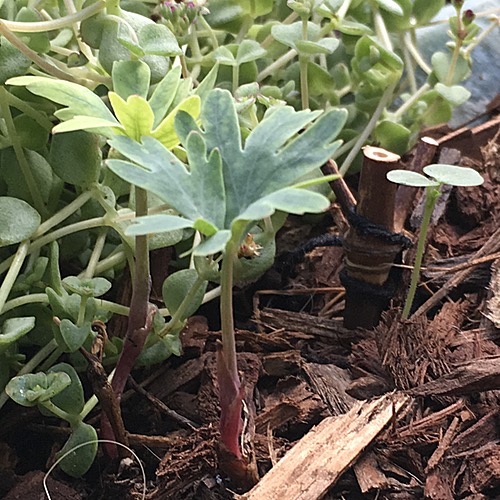
California Native Plant Society
I am currently reading Fred Dortort’s book, The Timber Press Guide to Succulent Plants of the World: A Comprehensive Reference to More than 2000 Species.
The book is filled with interesting information and loads of gorgeous images of plants. I was curious about hydathodes. The description from the book follows: their leaves are dotted with hydathodes, a kind of pore that enables wet-growing plants to expel water, but which dry-growing crassulas have reversed, turning them into water-absorbing organs.
I can visualize, but what do hydathodes really look like?
When I was editing photos for a previous post, I noticed what appeared to be pin pricks on the leaves of my new addition, a Crassula capitella Red Pagoda.

Example of Hydathodes on Crassula capitella Red Pagoda
It is exciting to read something interesting and then to see an example of it in person.
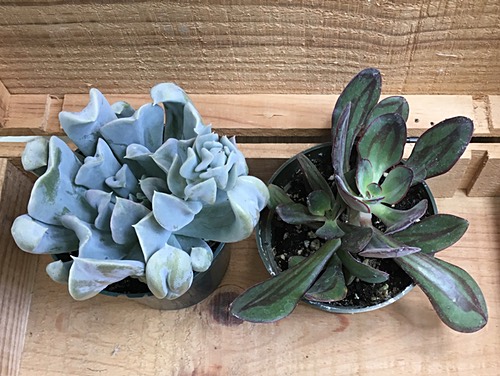
Echeveria nodulosa


These were found in the pot of the above plant.
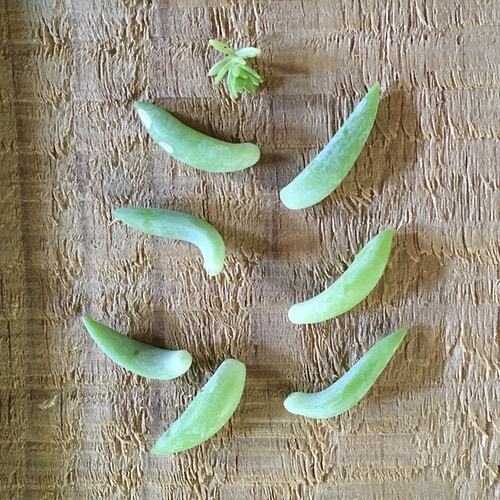
I potted them up.
Echeveria runyonii topsy turvy
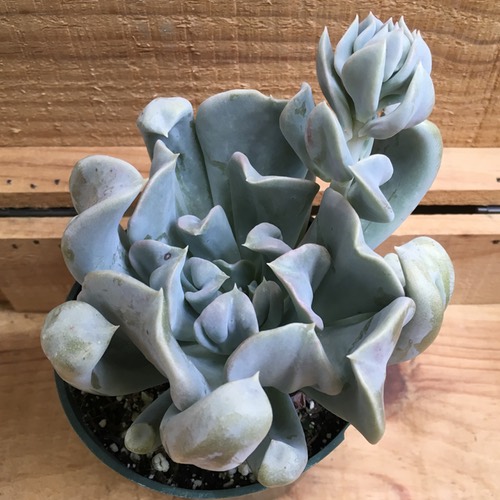
Purchased two succulents for my new rock/succulent garden from the Cal Poly students at the Farmers’ Market.
The small pots nicely in the car’s cup holders.
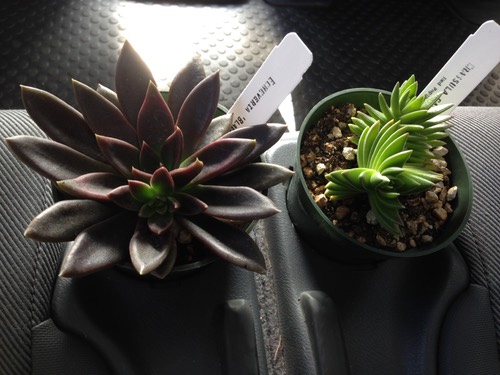
New Succulents on Drive Home.
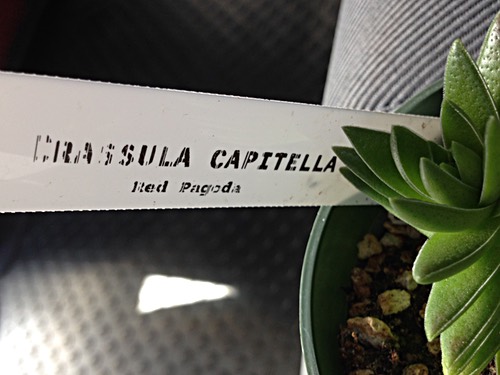
Crassula capitella Red Pagoda
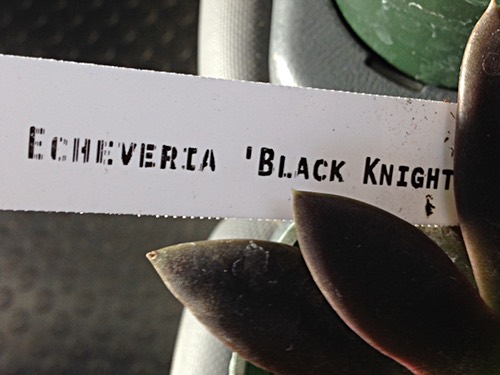
Echeveria Black Knight
Waiting for New Home

Ants on a Pandorea jasminoides Flower
Noticed a few pods, so I snagged them.
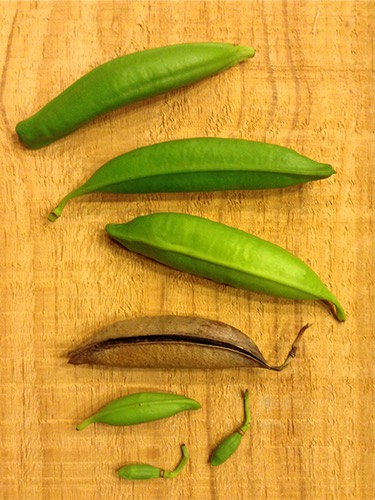
Previous posts on Pandorea jasminoides pods use as an art material–
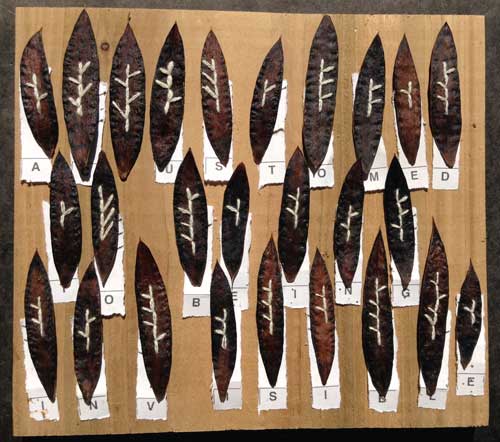
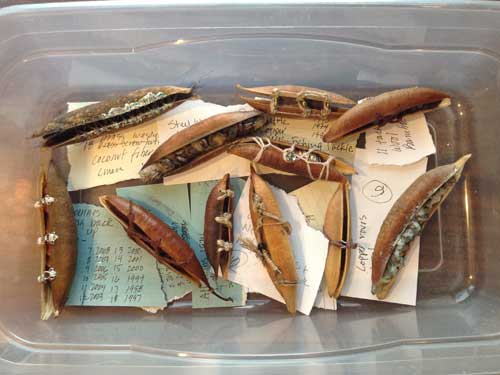
I have been thinking about compiling a series of misplaced shoes…those single shoes found in odd places.
When I was in the grocery store parking lot I saw this pair of brown shoes.

I like a nice oxford. The shoes look like they would be comfortable. I would definitely wear them. Wonder if the owner of the misplaced shoes attached the orange strip of plastic. But, why would someone do that and then leave them behind?
To see one misplaced shoe is odd, to see a pair is peculiar.
I visited a friend’s garden on November 1, 2016 to look at his milkweed plants covered with Monarch caterpillars.

While there I collected milkweed seed pods.
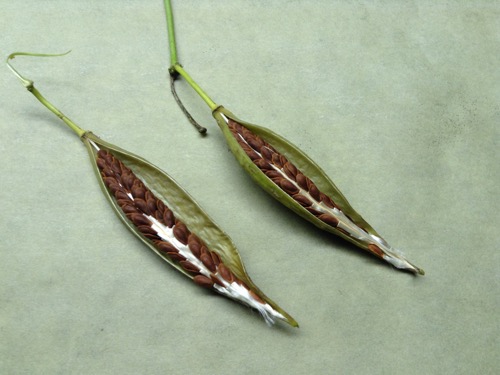
On November 3, 2016, I popped some of the seed in soil and today two of the plants are blooming.
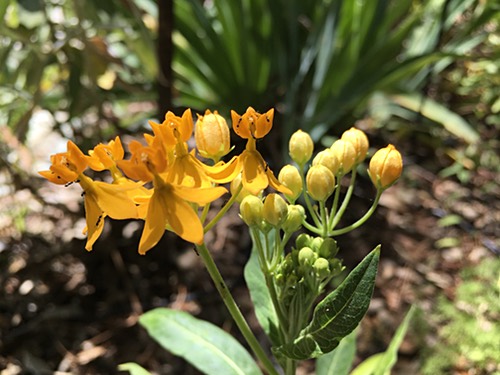
Curious why there are ants. Need to take a better look. It doesn’t appear that there is some other insect activity which is often the case. Ants are known for herding aphids for their honeydew.
My hope is that the milkweed can help the Monarch population. Recently I saw a sign posted at a local nursery that stated the exotic milkweed should be cut to the ground in the fall to prevent protozoan infection by Ophryocystis elektroscirrha (OE).
To read about the possibility of attempting to do something good that could have unwanted consequences, check out the Monarch Joint Venture site.
Post Written on Day of Planting